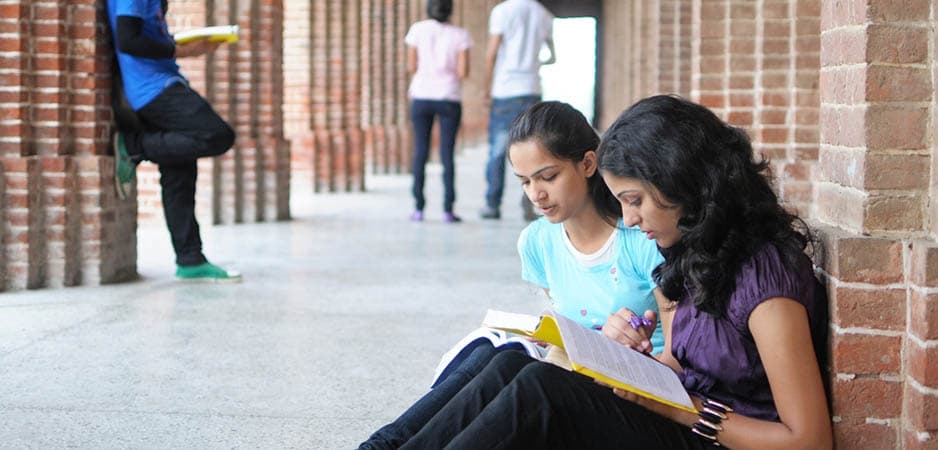The education system, with terrible teaching that programs Indians to focus on tests, must change and put a focus on learning instead.
In 2018, Apple’s co-founder, Steve Wozniak, visited India and made some fascinating observations on the country. He was humble enough to admit he knew little about India, but he remarked that he did not see “big advances in tech companies” in the country. He blamed the culture, which he saw as “one of success based upon academic excellence” and “having a good job.”
Wozniak observed that Indians are a lot like Singaporeans in this regard. They study, work hard and get an MBA. They may buy a Mercedes, “but where is the creativity?” Wozniak takes the view that creativity gets lost when behavior becomes too predictable and structured.
His observation on India might be harsh, but it is not far from the truth. Hard figures back Wozniak’s argument. In 2017, the UN’s World Intellectual Property Indicators (WIPO) reported that foreign nationals dominated the patents granted in India. They accounted for more than 85% of the newly-filed ones. According to Oxford Economics, Indian startups lack technological innovation and mimic successful businesses that begin elsewhere. When it comes to big players, only one Indian company, Hindustan Unilever, notably a subsidiary of the London-based Unilever group, made it to the top 75 in the Forbes list of the World’s Most Innovative Companies.
Just north of the Himalayas, another story is emerging. A country with more than a billion people is now at the forefront of cutting-edge technology. While China has built, perfected and scaled up its own high-speed rail technology, India’s high-speed version will run on 20th-century engines built through Japan’s tech know-how and its financial generosity. While China is innovating in quantum communication and computing, India is taking symbolic baby steps by awarding paltry sums that are unlikely to lead to significant results. And while Chinese startups account for 26% percent of the world’s unicorns, Indian startups form a mere 4%. Is this because Indians are less innovative than the Chinese?
THE NEW TRIANGULAR TRADE
In the US, Indians are considered incredibly innovative. A fifth of patents filed by foreigners in America are by people of Indian origin. Vinod Khosla, Vinod Dham, Ajay Bhatt, Sanjay Mehrotra and Sabeer Bhatia are among the thousands of great Indian innovators. A simple question arises: What do they have in common?
It turns out that most Indian innovators tend to pursue advanced graduate or business degrees from American schools before beginning their technological ventures. Indians are a key component of Silicon Valley success. They produce much of the intellectual property that produces wealth for the US.
In fact, a curious phenomenon is taking place these days. Talented Indians leave for the US to study. Then, they work for American companies or start something on their own. They tend to write software and design hardware. The software Indians write powers Chinese mass-manufactured hardware. The hardware they design is produced in the Middle Kingdom as well. Eventually, this software and hardware comes back to India in the form of OnePlus, Xiaomi, Huawei and even Apple phones.
This phenomenon is the modern-day equivalent of the infamous trans-Atlantic triangular trade of the past. For four centuries, colonial merchants purchased molasses, tobacco and cotton from plantations in the Americas. These products were produced by slaves. Then, they were shipped to Europe for factories to convert them into finished products. Ships took some of these goods to Africa where they were exchanged for slaves. Then, they sailed off to the Americas with these Africans who slaved under the simmering sun to grow sugarcane, tobacco and cotton for factories in Europe.
Today, Indian professionals have taken the place of African slaves, computer chips have replaced molasses and smartphones are the new rum. In this 21st-century formula, India has taken the place of Africa, China of America and America of Europe. Importantly, many Indian professionals, such as Sundar Pichai of Google and Satya Nadella of Microsoft, are captains of American ships that power this triangular trade. If Indians are talented enough to run the new triangular trade, why can’t they create new technologies and great businesses at home?
NONSTOP TESTS PRODUCE GOOD PARROTS
India is fixated with exams. There are easily over 400 entrance exams in India at undergraduate, graduate and professional levels for every field ranging from engineering to hospitality. In the vast majority of cases, entrance exams are the sole parameter for admission into prestigious institutions. The most famous example is the notorious Joint Entrance Examination (JEE) for the highly-selective Indian Institutes of Technology (IIT). Less than 1% make it through the JEE into IIT.
Getting in is a relentless rat race. Any experimenting or going off the beaten path can be fatal. Unlike Americans, Indians rarely get second chances. So, students have no incentive to go beyond the syllabus. Their relentless focus is to crack the entrance exam. A huge private coaching industry of ruthless cram schools has emerged to prepare students for success in JEE. Ironically, these private players prepare students to get into the taxpayer-funded IIT. In 2016, these cram schools were estimated to be worth $40 billion. They are worsening India’s already deep and wide class divide.
There is another phenomenon at play these days. Now, many creative Indian students are leaving the country for undergraduate degrees immediately after school. Unlike the Khoslas or Pichais of yore, they are bypassing India’s brutal entrance exams. The story of Malvika Raj Joshi has captured much public attention. A fantastic programmer, she was a three-time medal winner at the International Olympiad for Informatics. Yet she was not eligible for even the lowliest of IITs. Joshi had not taken the national school exams, a compulsory requirement for writing the JEE. While IIT was hung up on exams, the Massachusetts Institute of Technology (MIT) swooped in and offered Joshi a scholarship.
Joshi’s story is an exception. Most creative students are crushed by India’s brutal exams. The nonstop testing environment that Indians grow up in stifles creativity or critical thinking. It rewards rote learning and conformity. As a result, Indians are very good at parroting what examiners want of them, but are unable to think for themselves.
SCHOOLS KILL CURIOSITY
In 2009, 15-year-old students from India participated in the Programme for International Student Assessment (PISA) that evaluates reading, math and science abilities. Students from 73 countries participated and Indians were second from the bottom with Kyrgyzstan achieving last place. There is a catch, though. Indian students who took the test were from Tamil Nadu and Himachal Pradesh, two states considered showpieces of education among India’s 29 states and seven union territories. Unsurprisingly, India decided not to participate in PISA evaluations till 2021 to avoid losing more face.
Since 2009, the situation in India’s government-run schools has turned worse. The data from the 2016 annual report on rural education shows that high school students of the eighth grade who could not do basic three-digit by one-digit division rose from 32% in 2010 to 57% in 2016. Such figures make a mockery of claims that “New India” will be an innovation hub.
The ills of the schooling system are amplified when students go to colleges, institutes and universities. More often than not, they choose schools and colleges based on popular social perception instead of genuine interest.
China might lag behind the US in technological innovation, but its performance is much better than India. The Economist points out that more Indians might be attending school than ever before, but they are not learning much. Part of the problem might be that the country has too many schools. “India has 35% more students than China,” but it has four times the number of schools as China. India’s terribly-drafted Right to Education Act mandates primary schools within a kilometer of every village. It has resulted in 5,000 schools having no pupils at all.
Unlike India, China has not relied on a token legalistic solution to education. Instead, it has nurtured academic talent and promoted research with iron political will. In the early years of the 21st century, India and China were comparable in terms of the number of top-ranked universities and gross enrollment ratio. Since then, China has left India trailing behind far in the distance. It has spent more on research, hired better teachers and improved access to education for most of its young people.
There are many reasons for India’s pathetic educational record. It spends a paltry 2.7% of its GDP on school education, trailing behind other many developing countries, including dysfunctional ones such as Brazil. India spends this little money unwisely. And corruption is an ever-present phenomenon. Many become teachers through bribery and are utterly unqualified. A quarter do not even show up to teach. The Economist rightly argues that India’s 70,000 teacher training institutes are nothing but “low-grade degree shops.”
When teachers do turn up to teach, they invariably use outdated pedagogy. Rote-based learning is still the name of the game and tests determine cleverness. Few students observe animals or plants around them. Even fewer use their hands to build objects or create art. The government-run school system is so broken that even creative teachers are kneecapped by lack of funds. Primary school teachers get a measly 500 rupees (less than $8) per year for teaching and learning material. So, they are forced to rely on school textbooks, which have multitudinous errors, are infrequently reviewed and are of poor print quality apart from being frequently understocked.
As mentioned earlier, teacher quality is terrible in India’s government-run schools. Once they start collecting their salaries, they have little incentive to teach. No one holds them accountable. KPMG, a leading consulting firm, blames it on lack of output-based incentives or monitoring. The problem is deeper than that. Bureaucrats with no interest in or experience of education systems are in-charge of forming education policies. They leave the education departments in three years and have no long-term vision. The entire system is rotten.
Poor teacher quality and issues with textbooks also affect private schools. In fact, these schools invariably tend to pay teachers less than their public counterparts. Therefore, they attract low-quality teachers. Private schools are often better administered, though, and teachers do turn up to teach. Like the government-run system, the quality of teaching tends to be poor and students have no option but to rely on the parallel education industry to prepare for university entrance examinations.
 The fact that Indian students attend both schools and cram schools means that they have little time left for themselves. This busy schedule leaves little space and time to think. This kills their creativity even further. The entire purpose of education is reduced to jumping through hoops in a Kafkaesque system instead of to learn, think or innovate.
The fact that Indian students attend both schools and cram schools means that they have little time left for themselves. This busy schedule leaves little space and time to think. This kills their creativity even further. The entire purpose of education is reduced to jumping through hoops in a Kafkaesque system instead of to learn, think or innovate.
SHATTERED DREAMS AND BROKEN LIVES
The ills of the schooling system are amplified when students go to colleges, institutes and universities. More often than not, they choose schools and colleges based on popular social perception instead of genuine interest. Misinformation by cram schools often skews their judgment.
These authors, who have gained their Bachelor of Technology degrees from IIT Gandhinagar, can comment firsthand about the popular beliefs of the fabled IITs. “Ek crore ki naukri aur dher saari izzat” (a salary of 10 million and extraordinary prestige) is what many students expect when they step foot in IIT. The fixation with placement, an Indian term for finding a job or getting placed, in a top company drives most students. It is the reason they choose computer science because it the gateway to Google. Subjects such as materials science or bioengineering are perceived as poor choices because they are unlikely to lead to high salaries. Similarly, electrical engineering is equated with power plants, chemical engineering with petroleum and civil engineering with toilsome road-building.
Too many students think of IIT colleges as mere launching pads for MBAs at the famous Indian Institutes of Management (IIM), the counterparts to the IITs. Some others prepare for the Indian Civil Services Examination that opens to door to elite bureaucratic positions. “Ek crore ki naukri nahi to ek crore ki dowry” (if not 10 million as salary, then 10 million as dowry) is the aim for many students as well as parents.
Sadly, such high salaries and dowries are a mirage for most students. Gargantuan salaries are scanty, jobs at Google are few and prospects after fashionable majors are not quite what they are made out to be. As the authors have seen firsthand, many students make wrong choices. Even when they realize their mistake, the Indian system makes it almost impossible to rectify their errors. Students are often stuck studying for degrees they have little interest in. However, due to parental and social pressure, they soldier on. This comes at the price of exploration, innovation and “risky” entrepreneurial pursuits. In the end, most people end up in a rat race for a high-paying job, which the perceptive Wozniak diagnosed as the major reason for a lack of creativity.
FUNDAMENTAL CHANGES ARE THE NEED OF THE HOUR
India’s system is so broken that it needs fundamental changes, not cosmetic reforms. The authors have three suggestions.
First, India must centralize and decentralize at the same time. Under the Indian Constitution, education is a concurrent responsibility of both the central and state governments. Schools are affiliated with either central or state boards that determine curricula and conduct examinations. Both central and state governments run schools in similar locations. There are no common standards across India’s many school boards and no accountability.
In contrast, in China the entire education system is run by the Ministry of Education, imposing common standards across the country. Federal and democratic India cannot adopt the Chinese system. Yet it can certainly bring in a creative reform. It can let state school boards decide curricula and conduct exams for subjects such as local languages, local history and local culture, while the Ministry of Human Resource Development at New Delhi that is currently responsible for central school boards takes over subjects such as math, physics, chemistry and English. This creative mix of centralization and decentralization might allow India to impose a common standard of education while preserving its rich diversity in culture.
Second, India must adopt a performance-based appraisal system for promoting teachers. There must be incentives for them to teach well and promote creativity. A good example for India is Ghana, another former British colony that is in West Africa. Notably, Ghana won its independence a decade after India. Its national teachers’ standards lays down well-defined principles and metrics for evaluating teachers’ progress. These metrics incorporate evidence such as lesson plans, evaluations, testimonials, research and participation in professional development programs. Unsurprisingly, Ghana’s educational standards have risen over the last few years.
Third, Indian students must be able to make more informed choices when choosing their majors. To do so, schools must disseminate better information about various majors. Counseling must be an integral part of the educational experience. And the practice of admitting students into specific majors at the age of around 18 must go. Universities could allow students to choose their majors after a semester or year of study. This choice could be based not only on exams, but on hands-on projects.
Lest we forget, recent education reforms in Delhi indicate that major changes are possible. The authors hope that fundamental reforms come soon so that the best Indian minds can innovate not only in foreign lands, but also at home. It is high time for the new triangular trade to end.
The views expressed in this article are the author’s own and do not necessarily reflect Fair Observer’s editorial policy.
Support Fair Observer
We rely on your support for our independence, diversity and quality.
For more than 10 years, Fair Observer has been free, fair and independent. No billionaire owns us, no advertisers control us. We are a reader-supported nonprofit. Unlike many other publications, we keep our content free for readers regardless of where they live or whether they can afford to pay. We have no paywalls and no ads.
In the post-truth era of fake news, echo chambers and filter bubbles, we publish a plurality of perspectives from around the world. Anyone can publish with us, but everyone goes through a rigorous editorial process. So, you get fact-checked, well-reasoned content instead of noise.
We publish 2,500+ voices from 90+ countries. We also conduct education and training programs
on subjects ranging from digital media and journalism to writing and critical thinking. This
doesn’t come cheap. Servers, editors, trainers and web developers cost
money.
Please consider supporting us on a regular basis as a recurring donor or a
sustaining member.
Will you support FO’s journalism?
We rely on your support for our independence, diversity and quality.






